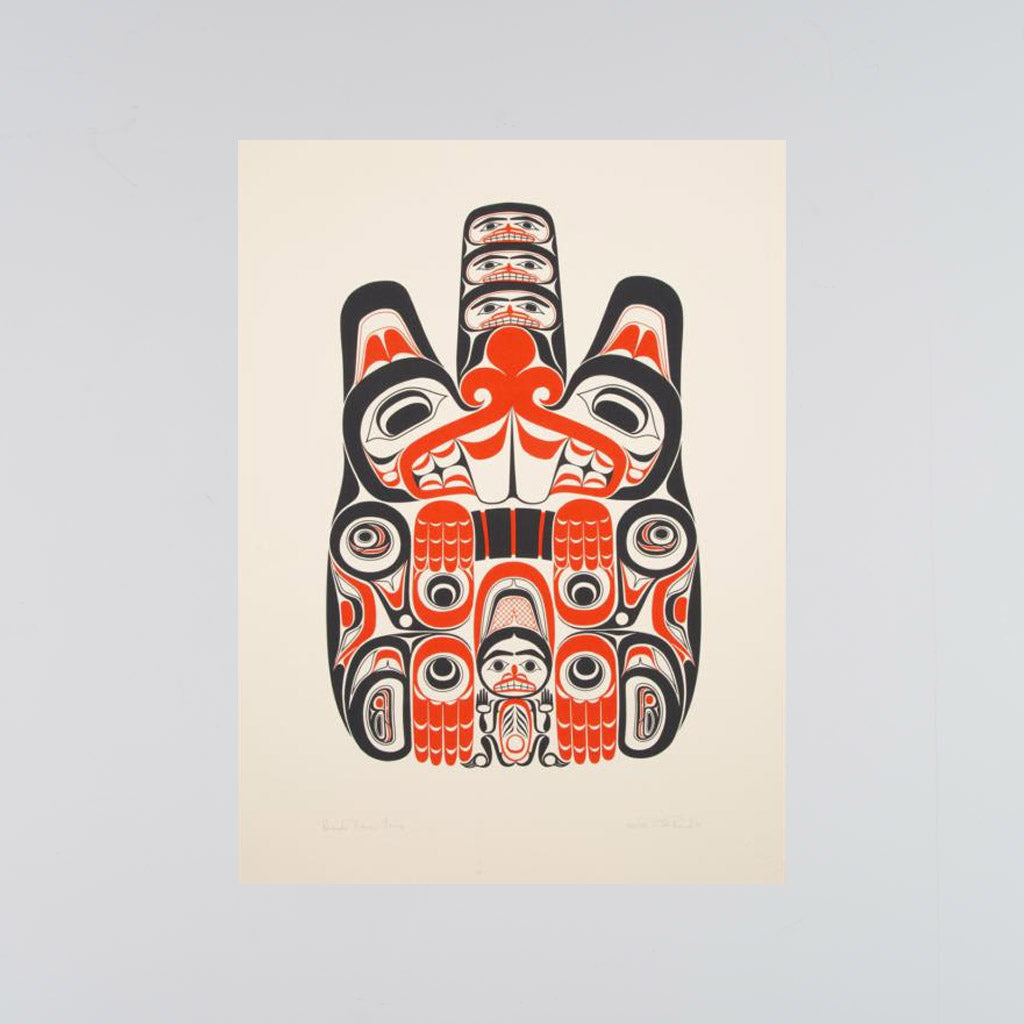Northwest Coast Indigenous Art is art created by the tribes along the northwest coast of Canada particularly in British Columbia. Some of the tribes that practiced these art forms include the Haida, Tlingit, Tshimsian and Nuu-chah-nulth to name a few. Some traditional art forms specific to the people from this area are wooden and stone carvings, baskets, masks, paddles, canoes, totem poles and bentwood boxes. However, it is important to note that not all the tribes listed practiced all the art forms that are common to this area.
Through my research I have discovered that researching Indigenous art in this area is an enormous task.This blog post intends to explore just a few of the art types and styles of this region and the specific tribes that created them.

“The term formline refers to the continuous swelling and tapering lines that unite design units in Northwest Coast Indigenous art. It is one of the most distinct characteristics of Haida two-dimensional and three-dimensional art, painting as well as carving. Each nation has their own recognizable style with main design features like the ovoid, U-form, and tri-neg. The term Formline was coined by art historian Bill Holm in the 1960s which gave scholars, collectors, and Indigenous artists a vocabulary with which to discuss and appreciate the iconic art form.”
Formline art originated with the Tlingit, Haida and Tsimshian peoples of the Northwest Coast of Canada. Early examples of formline designs date back about 2,000 years. Some of the earliest carvings have been discovered in the region that is now Prince Rupert, B.C. The formline technique can be found on a variety of art such as ceremonial objects, totem poles, bowls, pipes, spoons, boxes, canoes, and the walls of houses.
In traditional formline art, the main parts of a design were usually painted black, with red used for secondary details. Artists also sometimes added blue or green, and occasionally yellow. Before the paints we use today were available, Indigenous artists created their own paint from natural materials. For example, red was made from red ochre, while black came from charcoal made by burning wood.
To thicken the paint, artists mixed the pigments with homemade bases, such as chewed salmon eggs blended with cedar bark, or gelatin made by boiling animal bones. Brushes were crafted by hand, using animal hair or bristles connected to wooden sticks to use as handles.

Haida Beaver T’sing – Bill Reid (Haida)
Totem poles first originated on the northwest coast of Canada and up toward Alaska. The people who made totem poles include the Haida, Nuxalk (Bella Coola), Kwakwaka’wakw, Tsimshian and Tlingit. The totem pole is a tall structure created by Northwest Coast Indigenous peoples to represent a nation’s family, or history and to express their rights to territories, songs, dances, and other cultural traditions. Totem poles may also serve as memorials or as a way to tell stories. They are carved from large, straight red cedar and painted in bold, vibrant colours, they stand as powerful symbols of both coastal Indigenous culture and Northwest Coast Indigenous art.
Animal figures on totem poles often represent creatures from family crests, which belong to specific family lines and symbolize their histories. Animals commonly found on totem poles include the beaver, bear, wolf, shark, killer whale, raven, eagle, frog, and even the mosquito. These crest figures represent kinship, group identity, and membership, while the other carvings on the pole may depict important events or stories from a family’s history.
Many of the tribes of Northwest Coast were also renowned for their expertly crafted canoes and paddles, which combined skilled engineering with artistic design. Canoes are one of the major art forms of the Northwest Coast Indigenous people. In this area cedar trees were cut down or sometimes found on the forest floor or beaches and crafted into canoes without the use of modern engineering. Skilled carvers shaped the logs into powerful sea vessels. The paddles were carefully carved out and decorated with stories, symbols and designs depending on the nation they belonged to. Beyond their practical role in propelling canoes, paddles also held cultural significance, sometimes serving as ceremonial objects or decorative pieces.
The dugout canoe was an example of a sea going canoe style created and used by tribes such as Tlingit, Tsimshian, Nuxalk, Kwakwaka’wakw, Nuu-chah-nulth and Haida. These canoes were constructed out of softwoods like cedar. The canoes were decorated with animal designs and used colors that could be found in the environment like red ochre and black char.

Sorry, but comments are not enabled on this site.